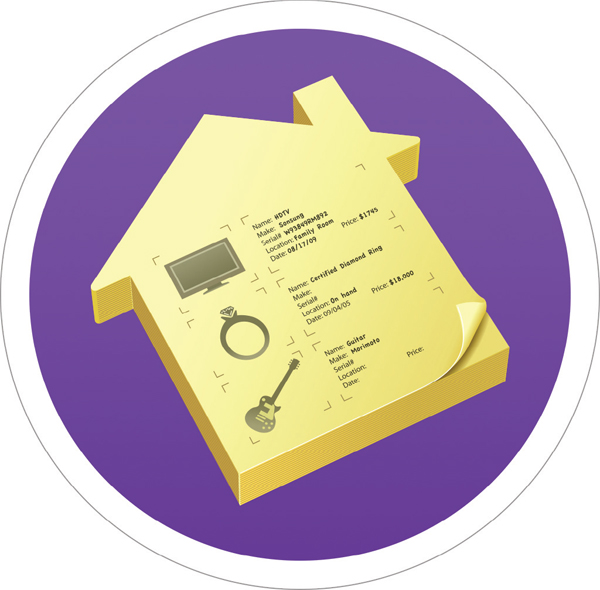We live in a time of great uncertainty, from increased terroristactivity around the world to major weather-related catastrophes.Moreover, we live during a period of vast technological advancementwhere artificial intelligence (AI) can predict inclement weatherbefore it happens based on historical weather patterns, and dronesare taking to the skies to lend a hand in evaluating loss.
Technology is essentially helping to reshape the claimsworkflow.
This is apparent from the moment a claim is filed to theestimate and final decision. There is a new wave of technology andapps designed for insurers, and some created withthe intention of managing the claims workflow. Unfortunately,insurers have been slow to adapt to emerging technologies.
|There is however, a growing number of insurtech startups likeLemonade, bringing new practices to the age-old business. This hasbeen mostly in the form of innovations like apps and solutions forinsurers to have in their toolkit. Many of these solutions are evenmutually beneficial, and have the potential to make the job ofadjusters easier — and reduce claims wait times forpolicyholders.
The biggest beneficiaries involved in the process,however, are adjusters.
Let's explore nine tech tools and apps, perfect for assisting claims adjusters in doing their jobmore effectively, efficiently and ultimately, speeding up theclaims process.
||
Matterport
They say a picture is worth a thousand words, but what about a3D version of, let's say — a house prior to a devastating hurricanethat completely destroyed it?
|This is exactly what Matterport does — delivering virtual realityrenderings of real-world spaces like homes and factories.
|Through its camera, which produces 3D floor plans, adjusters cangain insight on what an insured's property looked like both beforeand after disaster strikes. This paints a more accurate portraitfor adjusters while assessing the damage.
|"It changes the product we create,"explained WriteLoss's CEO, David Herring."It lets everyone go back to a frozen point in timebecause it captures images of everything in the space." An adjustercan capture approximately 1300-1500 square feet in an hour.
|It also solves another real-world problem of cutting down ontravel time. No matter where insurers are located geographically inrelation to the claim — expediting claims adjudication time isinvaluable.
|
Guidewire
Another tool available for insurers is GuidewireClaimCenter, an end-to-end claims management system forproperty/casualty insurers. The platform helps define, enforce andcontinually optimize preferred claims handling processes to make itfaster and more transparent for policyholders.
|The technology continually monitors and optimizes the claimsprocess — as spelled out by the insurer.
|As managing the workflow of the claims process can betime-consuming, Guidewire offers easy access to customer data andsets benchmarks for deliverables. This brings transparency to thetypically drawn out and 'grey' claims process.
|According to their website, the system eliminates the need forrepetitive data entry, provides a simplified first notice of lossand automatically generates correspondence. Furthermore, itautomatically assigns claims and workloads to agents based oncurrent workload and automatically reports on claims.
||
TRUEPIC
With the insurer applications available to collect data frompolicyholders, it becomes even more important to verify that thedigital images and videos provided are an authentic representationof the loss. Within seconds of capturing a photo, TRUEPIC verifies that animage has not been digitally altered, ensures the time, date, andlocation are all accurate, and runs through a variety of computervision algorithms to test for fraudulent behavior. The company alsocreates an evidentiary quality chain of custody utilizingblockchain technology.
|"Our technology aims to cut back on the $32 billion in P&Crelated fraud experienced in 2016, while also reducing adjustmentcosts and compressing the claims cycle for consumers," said JeffMcGregor, CEO.
||
Home Inventory from Binary Formations
Itemizing everything in a house can be a pain, especially ifpeople make regular purchases. Home Inventory lets policyholders identify everythingin their home, (even the home itself) and share data with theirbroker.
|Once policyholders make a purchase, they will be instructed toupload a photo of the purchase, and it will be cataloged once theycomplete the form about the newly-acquired item. The form, which isfairly detailed, will prompt them to enter information on the priceof the item purchased, its color, make, model and more. It answersall of the questions necessary to assist adjusters in performing anassessment of loss and can come in handy when issuing payment fordamages.
|Policyholders can segment all of their purchased items intocategories like electronics and jewelry. The platform has an alertsystem that updates them when cataloged belongings have validwarranty coverage, coverage on the verge of expiration and coveragethat's already expired.
|
One of its most powerful features takes the value of all oftheir belongings and presents it in a chart, which paints awholistic photo for homeowners that includes the total value ofeach item by category and overall value. It even stores copies ofreceipts, insurance policies and other important files.
|This solves the real-world problem of proving the value of itemsin case of an emergency weather, a fire, or burglary wherevaluables are stolen or damaged.
||
Snapsheet
With statistics like closing a claim within two-and-a-half daysafter having opened a claim — Snapsheet hasthe potential to be a valuable tool for claims adjusters. Thetechnology also helps reduce the time involved in waiting forphotos of damaged property and receiving an initial estimate.
|So how does it work? Through a preparatory solution, theinsurtech startup created a faster yet accurate way to adjudicateclaims.
|On a practical level, its technology was recently used duringHurricane Harvey. Snapsheet processed more than 6,000 claimsstarting August 17, 2017 and ending September 7, 2017, with anaverage cycle time of just over one day from first notice of lossto the final appraisal.
||
Adomea
A hailstorm can be more than inconvenient — and can cost bothinsurers and policyholders a lot of money.
|However, there is now a new way to evaluate hail damage. Asfuturistic as it sounds, it taps the power of AI and photography totake over 1700 photos of a vehicle after a hail storm.
|The scan itself provides an accurate digital overview of thevehicle and damage sustained.
|By comparing 3D images of the vehicle to its library of allmakes and models of cars — Adomea Weather eliminates the idea of anestimate and provides policyholders with the exact amount neededfor repairs. It does this by providing a thorough report toinsurance providers, policyholders and repair shops.
||
Weather Analytics
Equipped with a suite of technologies for what it calls"predictive weather analytics," the company takes over150 years of historical weather data from sources like airports andThe National Weather Association — analyzes it and provides an ideaof what weather conditions will be like on any given day in thefuture.
|There is at least one major insurance company currentlyimplementing its technology, which allows them to tellpolicyholders the most optimal time to travel with the lowestthreat for rain or inclement weather.
|
PDA Express
Here is a web-based app that makes the appraisal process moreefficient. It also lets policyholders receive estimates in threehours or less.
|PDAExpress enables users to upload photos of damage — nixing theneed to visit a body shop. To ensure things run smoothly, a liveadjuster assists in managing the process.
|
DroneDeploy
Drones are becoming more than just a buzzword — and they arebuzzing through the skies helping record and assess damage when aninsurance claim has been filed.
|In the case of DroneDeploy, its drone captures detailed renderings ofsites, which can save insurance providers time and moreimportantly, money. It can also reduce the amount of time adjustersneed to spend on-site, furthermore reducing the risk of danger andinjury.
|Secondly, insurers can more accurately map and inspect naturaldisaster sites and car crashes. The drone can do this by capturinghigh-quality images, and also makes for better collaborationbetween adjusters and inspectors — allowing them to complete theiranalysis quickly and accurately.
|Even though insurers are slowly but surely adapting to newtechnologies, it is important to recognize the value in exploringthem for current and future applications.
|As policyholders become more impatient with the overall claimsprocess, it will become paramount to integrate such technologies inorder to keep customer satisfaction and response times high.
|Moshe Beauford is a freelance journalist, copywriter andblogger. Beauford's work has appeared in publications such asGeekTime Israel, PasteMagazine, Times of Israel, Property Casualty360 and Claims. He can be reached at [email protected].
|For more information on these and other products for theinsurance claims industry, join us at the America's Claims Event in Austin,Texas from June 25-27.
Want to continue reading?
Become a Free PropertyCasualty360 Digital Reader
Your access to unlimited PropertyCasualty360 content isn’t changing.
Once you are an ALM digital member, you’ll receive:
- All PropertyCasualty360.com news coverage, best practices, and in-depth analysis.
- Educational webcasts, resources from industry leaders, and informative newsletters.
- Other award-winning websites including BenefitsPRO.com and ThinkAdvisor.com.
Already have an account? Sign In


